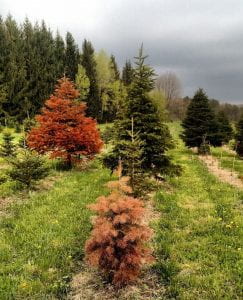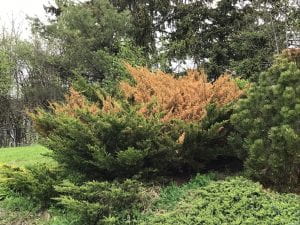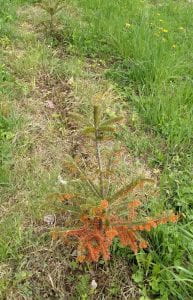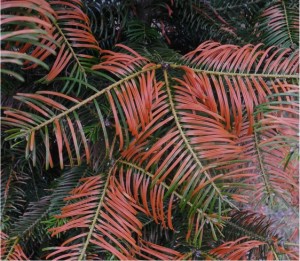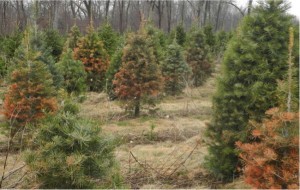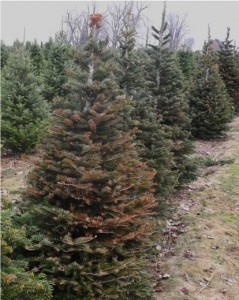What a winter! It was long and cold. We experienced a couple of polar vortex events and subzero Fahrenheit temperatures were common.
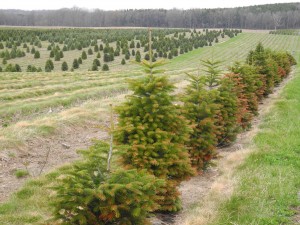
Winter injury symptoms of needle browning visible in the foreground on Nordmann fir trees.
Evergreen trees and conifers were impacted by the extreme conditions. The symptoms of the winter injury has been showing up on evergreen needles for the last month or so. The damage is appearing as needle browning– sometimes whole needles and sometimes just the tips.
Some of the species affected this spring :

Winter Injury symptoms is common Nordmann firs.
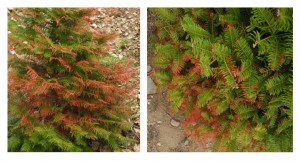
Grand fir trees are also showing winter injury symptoms in many parts of NY.

Douglas fir trees that have Swiss needlecast infections were most prone to winter injury.
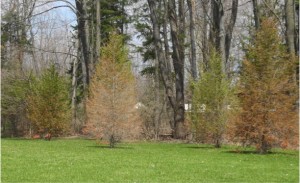
Untreated Douglas fir trees in in the landscape. Suffering from a combination of Swiss needlecast and winter injury.

Concolor fir trees planted in sites with poor drainage were susceptible to winter injury.
The good news is that in almost every case the buds are fine! So the new growth will soon help cover up the brown, winter injured needles. Be sure the soil conditions are optimum to maximize growth. Adjust pH and fertilize as needed.
And one more…
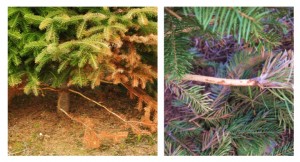
A different type of injury that occurred during this winter. Lower branch dieback from rabbits and/or meadow mice feeding on bark. (They apparently have their favorites. In this mixed planting they only munched on the Korean fir trees.)

